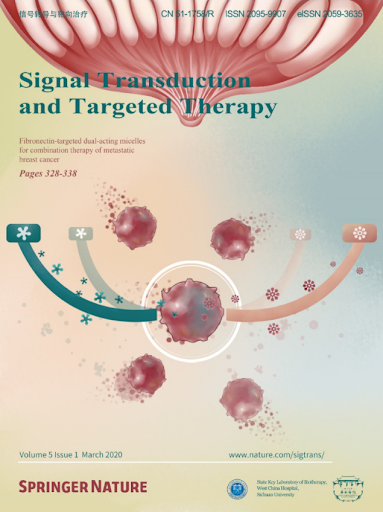Reversion of aortic valve cells calcification by activation of Notch signalling via histone acetylation induction.
IF 52.7
1区 医学
Q1 BIOCHEMISTRY & MOLECULAR BIOLOGY
引用次数: 0
Abstract
Calcification of the aortic valve is a prevalent cardiovascular pathology in the aging population. Traditionally linked to inflammation, lipid accumulation, and risk conditions, this disease remains poorly understood, and effective treatments to halt its progression are not yet available. We hypothesized that calcification of the human valve interstitial cells (VICs) is associated with cellular senescence and alterations in the epigenetic setup, like in arteries. To verify this hypothesis, we examined the epigenetic marks (DNA methylation; Histones H3/H4 acetylation/methylation), the senescence and the calcification process in human VICs obtained from two distinct pathologic settings of the aortic valve (valve insufficiency and valve stenosis), and employed a mouse model of vascular/valve calcification, based on the administration of Vitamin D. Our findings revealed a link between the senescent phenotype of human VICs and calcification, characterized by increased DNA methylation and changes in histone epigenetic marks. To reverse the senescent/calcific VICs phenotype, we used Pentadecylidenemalonate-1b (SPV106), which activates KAT2B/pCAF histone acetyltransferase. In human VICs, SPV106 restored Histone acetylation marks, modified general chromatin accessibility and upregulated expression of Notch1, a potent inhibitor of valve calcification. The treatment also prevented the accumulation of calcific lesions in an ex vivo model of aortic valve calcification. In vivo treatment with SPV106 reduced calcification of the valve induced by administering Vitamin-D and positively preserved the valve motion compromised by calcification and the overall cardiac function. Based on these results, we propose the treatment with activators of histone acetylates as a viable option to prevent senescence/calcification of aortic VICs via restoration of correct chromatin acetylation, with concrete hopes to retard the progression of valve stenosis, a still largely unmet therapeutic need.通过组蛋白乙酰化诱导激活Notch信号逆转主动脉瓣细胞钙化。
主动脉瓣钙化是老年人常见的心血管疾病。传统上,这种疾病与炎症、脂质积累和危险状况有关,但人们对这种疾病的了解仍然很少,目前还没有有效的治疗方法来阻止其进展。我们假设人类瓣膜间质细胞(VICs)的钙化与细胞衰老和表观遗传结构的改变有关,如动脉。为了验证这一假设,我们检查了表观遗传标记(DNA甲基化;组蛋白H3/H4乙酰化/甲基化),衰老和钙化过程的研究,从主动脉瓣的两种不同病理情况(瓣膜功能不全和瓣膜狭窄)中获得,并采用基于维生素d的血管/瓣膜钙化小鼠模型。我们的研究结果揭示了人类vic衰老表型与钙化之间的联系,其特征是DNA甲基化增加和组蛋白表观遗传标记的变化。为了逆转衰老/钙化的vic表型,我们使用了激活KAT2B/pCAF组蛋白乙酰转移酶的pentadecylidenemalate -1b (SPV106)。在人类vic中,SPV106恢复了组蛋白乙酰化标记,改变了一般染色质的可及性,并上调了Notch1的表达,Notch1是一种有效的瓣膜钙化抑制剂。在离体主动脉瓣钙化模型中,该治疗还可以防止钙化病变的积累。体内用SPV106治疗可减少维生素d诱导的瓣膜钙化,并积极保护钙化损害的瓣膜运动和整体心功能。基于这些结果,我们建议使用组蛋白乙酰化激活剂作为一种可行的治疗方法,通过恢复正确的染色质乙酰化来预防主动脉vic的衰老/钙化,并具体希望延缓瓣膜狭窄的进展,这是一个很大程度上尚未满足的治疗需求。
本文章由计算机程序翻译,如有差异,请以英文原文为准。
求助全文
约1分钟内获得全文
求助全文
来源期刊

Signal Transduction and Targeted Therapy
Biochemistry, Genetics and Molecular Biology-Genetics
CiteScore
44.50
自引率
1.50%
发文量
384
审稿时长
5 weeks
期刊介绍:
Signal Transduction and Targeted Therapy is an open access journal that focuses on timely publication of cutting-edge discoveries and advancements in basic science and clinical research related to signal transduction and targeted therapy.
Scope: The journal covers research on major human diseases, including, but not limited to:
Cancer,Cardiovascular diseases,Autoimmune diseases,Nervous system diseases.
 求助内容:
求助内容: 应助结果提醒方式:
应助结果提醒方式:


